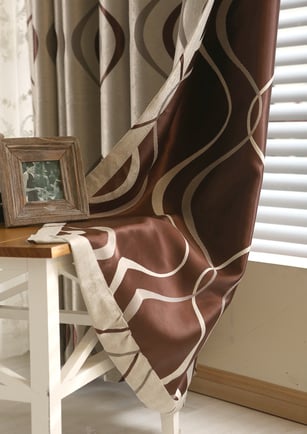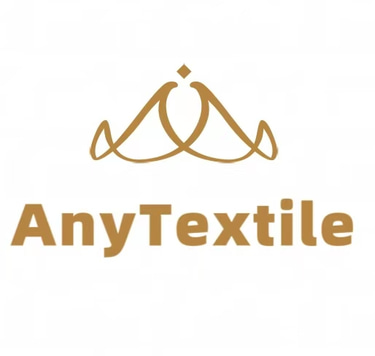The Future of Curtain Fabrics: Exploring Innovative Materials and Manufacturing Processes
11/29/20245 min read


Introduction to Curtain Fabrics and Their Evolution
Curtain fabrics have played a pivotal role in interior design throughout history, serving not only as practical solutions for privacy and light control but also as vital components of home aesthetics. From the earliest times, various materials have been utilized to create these decorative elements, with cotton, linen, and silk being among the most traditional. Each of these fabrics offers unique characteristics; for instance, cotton is known for its durability and ease of maintenance, while silk brings an element of luxury and elegance to a space.
The evolution of curtain fabrics can be traced back to ancient civilizations, where heavy drapes made from natural fibers were utilized to provide shelter and create distinct spaces within homes. As societies progressed, the function of curtains began to transform from mere utility to a representation of status and artistry. In the Middle Ages, elaborate tapestries became popular, showcasing intricate designs and vivid colors, and highlighting the wealth of the homeowner. The Renaissance period further elevated the role of textiles in interiors, leading to the adoption of sumptuous fabrics like velvet and brocade for drapery.
With the onset of the Industrial Revolution, curtain fabrication experienced significant advancements, resulting in the mass production of fabrics. This period marked a shift towards more accessible materials and patterns, paving the way for personalization in home décor. However, as consumer preferences continue to evolve in today's market, there is an increasing demand for innovative materials that not only meet aesthetic desires but also address sustainability and functionality.
Technological advancements have opened new avenues for the development of curtain fabrics, promoting a shift towards smart textiles and eco-friendly alternatives. The significance of curtains extends beyond mere decoration; they contribute to energy efficiency and sound insulation, ultimately enhancing the quality of living spaces. As we delve deeper into the future of curtain fabrics, it becomes essential to explore how these innovations will shape the design landscape to meet modern-day needs.
Emerging Materials in Curtain Fabric Production
As the demand for curtain fabrics evolves, the industry is witnessing a surge in innovative materials that prioritize sustainability and performance. Traditional fabric options are increasingly being complemented or replaced by emerging materials that emphasize eco-friendliness, and durability, without compromising aesthetic appeal. Among these advancements is the use of recycled materials, which helps to mitigate environmental impact. Manufacturers are now sourcing PET (polyethylene terephthalate) fabric derived from recycled plastic bottles, transforming waste into stylish and functional curtain fabric. This process not only offers an avenue for resource conservation but also provides consumers with eco-conscious choices.
In addition to recycled options, the market is also expanding its horizons with organic textiles. These fabrics are produced from natural fibers that are grown without harmful chemicals. Cotton, linen, and hemp represent some of the organic materials being utilized in high-end curtains. They not only provide a softer touch and richer texture but also align with the increasing consumer preference for environmentally responsible products. Manufacturers are touting these benefits, positioning organic curtains as both luxurious and sustainable options, which resonate well with modern consumers.
Further advancements have emerged in synthetic alternatives designed to mimic the qualities of natural fibers while offering enhanced performance characteristics. For instance, advancements in fiber technology have led to the development of lightweight, stain-resistant, and UV-blocking curtain fabrics. These synthetic options allow for easy maintenance and longevity, making them practical choices for both residential and commercial applications. Leading designers and textile manufacturers are pioneering collections that showcase these innovative materials, underscoring their potential to redefine the landscape of curtain fabric production. Not only do these materials promise significant benefits in terms of durability and ease of care, but they also herald a shift towards more sustainable and responsible production practices across the industry.
Innovative Manufacturing Processes Transforming Curtain Fabrics
The manufacturing landscape of curtain fabrics is undergoing a significant transformation, thanks to innovative techniques that enhance production efficiency and product quality. One of the most notable advancements in this field is 3D knitting, which allows fabric to be crafted through a highly intricate process. This technique not only reduces material waste but also enables the creation of complex patterns and designs that align closely with contemporary decor trends. By utilizing 3D knitting, manufacturers can produce highly customizable curtain fabrics that cater to individual consumer preferences.
Another game-changing method is digital printing, which has revolutionized how designs are applied to fabrics. Unlike traditional printing methods that can be time-consuming and resource-intensive, digital printing offers precise application of color and detail while significantly reducing water and energy consumption. This sustainable practice not only minimizes environmental impacts but also allows for rapid prototyping, enabling designers to test various patterns and colors before final production. Consequently, consumers benefit from a wider array of design options that can be tailored to their unique tastes.
Automation plays a crucial role in modern curtain fabric production, streamlining complex processes and enhancing overall productivity. Automated cutting and sewing technologies have dramatically improved speed while maintaining high-quality standards. These innovations not only reduce labor costs but also ensure that businesses can meet the growing demand for customized products without compromising on quality. The integration of automation fosters a faster turnaround time, which is increasingly important in today’s fast-paced market.
Lastly, sustainability practices have gained momentum in the manufacturing of curtain fabrics. From sourcing eco-friendly materials to implementing energy-saving technologies, the industry is focusing on reducing its carbon footprint. By embracing these innovative processes, manufacturers are not just improving production efficiency but are also aligning with the modern consumer's desire for sustainable and personalized home decor solutions.
The Future Outlook: Trends and Predictions for Curtain Fabrics
As the curtain fabric industry moves into the future, several notable trends and predictions are emerging, largely driven by advancements in technology and evolving consumer preferences. One of the most significant trends is the development of smart fabrics. These innovative materials possess the ability to adjust to environmental conditions such as light and temperature, contributing not only to energy efficiency but also enhancing user comfort. Imagine curtains that can automatically alter their opacity based on sunlight intensity, thereby helping to regulate indoor temperatures. This technological evolution marks a pivotal shift in how curtain fabrics interact with their surroundings.
Furthermore, the aesthetics of curtain fabrics are poised for transformation as well. With the rise of diverse design movements, manufacturers are increasingly experimenting with textures, colors, and patterns to create fabrics that not only serve practical purposes but also act as critical elements in interior design. This trend mirrors broader shifts in consumer demand for personalization and creativity in home décor. Consequently, curtain fabrics are becoming more than merely functional items; they are emerging as essential components of a well-designed space.
In addition to technological and aesthetic advancements, predictions regarding consumer behavior reflect a growing emphasis on sustainability. As eco-consciousness continues to permeate various markets, consumers are likely to prioritize purchasing curtains made from sustainable materials, such as organic textiles or recycled fibers. This shift toward eco-friendly products is expected to influence not only consumer preferences but also manufacturers' sourcing strategies and production processes.
In conclusion, the future of curtain fabrics is bright, driven by innovations in smart technology, evolving aesthetics, and a focus on sustainability. Manufacturers and designers are urged to embrace this wave of innovation, adapting to changing consumer demands while continuing to push the boundaries of what curtain fabrics can achieve.
Curtains&Fabrics
Design,production,sales,service in curtain fabrics&curtians.
Quality
Products
sales01@anytextile.com
+8615968501933
© 2024. SHAOXING LEYAO IMPORT AND EXPORT CO.LTD All rights reserved.
